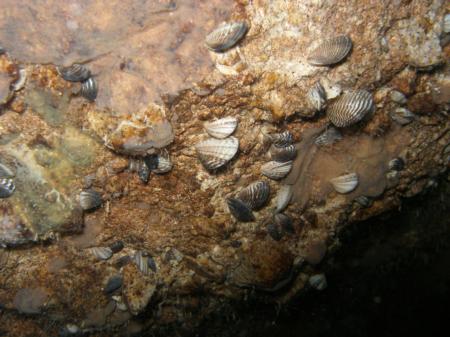Home Page

These species have great potential to cause ecological harm by modifying aquatic habitats. They reproduce rapidly and reach very high densities. Thus, they compete for space with native species, and because they filter phytoplankton out of huge volumes of water, they can change the physical and biological properties of the ecosystem.
They may also cause significant economic harm by clogging pipes and covering infrastructure from boat engines and docks to dam gates and irrigation channels.
More information
Calendar
| Event Name | Date |
|---|
UC Resources
Interested in starting a detection program? Check out our Early Detection Monitoring Manual for Quagga Mussels!
Looking for guidance on eradication and control? See CA SeaGrant's Quagga and Zebra Mussel Eradication and Control Tactics Technical Report
This practical report explains how to use an Integrated Pest Management (IPM) approach and specific tactics for eradicating and/or controlling invasive dreissenid (quagga and zebra) mussels in lakes and reservoirs. It covers how to develop and get started on a management strategy, manual & mechanical removal, oxygen deprivation, chemical application, emerging technologies, and an overview of permitting and regulatory processes.
